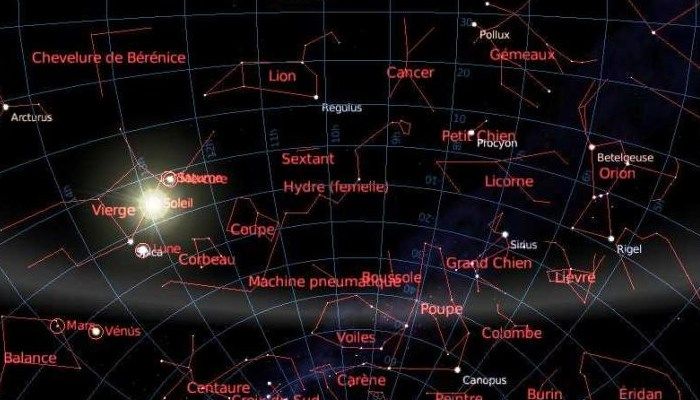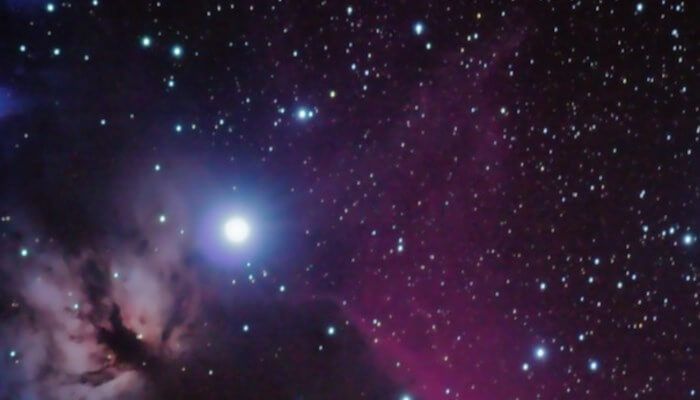The night sky has intrigued humanity for centuries, without thinking how captivating it has been for students of astronomy, The constellations It is more than millions of beautiful stars, through the constellations we can learn a lot about the universe and the galaxy that goes beyond.
Without having knowledge of new technologies, of the means of recreation such as cinema, the internet, television, etc. The sky and the constellations was a night show, without imagining that in ancient times the constellations helped the sailors in the dark ocean to their location, now it helps the astronomers to discover the mystery it hides.
Formerly we did not have advanced equipment such as the compass or the GPS, we had the stars, the constellations can help us with our orientation because it marks the distance, the direction and the way to go. On earth, to know where a place is, we give the latitude (equivalent to the distance between the North Pole and the South Pole) and the longitude (it is the distance between East and West). Similarly there are celestial coordinates and they are called Declination (similar to Earth's latitude) and Right Ascension (equivalent to Earth's longitude).

What are Constellations?
The constellation is a set of stars in the celestial dome that are close enough that it gives an imaginary appearance of a figure to the summit heavenly. A constellation is therefore considered to be an asterism (it is a figure notable for especially radiant stars).
You can also read. . . THE GALAXIES, THEIR DELIROUS FORMS AND THEIR MOST RARE CURIOSITIES.
In the sky, the stars of a constellation are far removed from each other but are regrouped in figures, and the constellation does not have a measurable distance. The western constellations are regrouped into two parts, dividing the sky more or less following both terrestrial hemispheres, the southern sky to the south and the northern sky to the north.
How many constellations exist?
There are 88 explored constellations keeping their mythological names, but it is important to know that, obviously, many of the known constellations are no longer officially recognized. In total, the names belong to 17 mythological heroes, 29 objects and 42 animals, of ancient and modern origin. Well, they include Andromeda, Aquila, Auriga, Camelopardalis, Cancer, Capricornus, Cassiopeia, Centaurus, Columba, Coma Berenices, Corvus, Cygnus, Delphinus, Gemini, Leo, Libra, Pegasus, Serpens, Taurus, Ursa Maior and Virgo.
Most Outstanding Constellations
-
great bear
(Ursa Major or Ursa Major) is one of the largest and easiest to identify among the circumpolar Constellations, The Great Bear has 8 stars: Alioth (ε UMa), Dubhe (α UMa), Alkaid (η UMa), Mizar (ζ UMa), Merak (β UMa), Phad (γ UMa), ψ UMa, Tania Australis (μUMa), Talitha Borealis (ιUMa).
On the other hand, in the Great Bear there are two galaxies important ones bearing the number M81 (Bode Galaxy) and M102 (Pinwheel Galaxy).
-
little bear
(Ursa Minor or Ursa Minor) is formed by 7 stars and the constellation has a shape that precedes the Great Bear but in smaller, it is a weakly luminous one. The stars that give life in this constellation are: Polar Star (α UMi), Kocab (β UMi), Pherkad (γ UMi), ε UMi, 5 UMi, Alifa Al Farkadain (ζ UMi).
-
Dragon
It's one of 88 constellations from the sky, and the eighth by the figure. It is constituted by a long continuation of stars that goes along a part of the Little Bear. Both Bears connect with the tail of the Dragon constellation. The stars of this constellation are named Thouban (α Dra), (β Dra), Etamin (γ Dra), Altais (δ Dra), Edasich (ι Dra), Giansar (λ Dra). Dragon wraps Little Bear bound for the star Vega.
-
Cassiopeia
(Cassiopeia) It is located in the opposite constellation of the Great Bear and, on the other side of the Polaris star, we see a simply identifiable giant «W» that delimits in the Milky Way, the 5 stars of the Cassiopeia constellation. The main star of the Cassiopeia constellation is named Shedir (α Cas), Caph (β Cas), γ Cas, Rucnbach (δ Cas), ε Cas. Cassiopeia is visible in the northern hemisphere.
-
Cepheus
(Cepheus) Between the stars of Cassiopeia and of the Dragon is Céphée. This constellation is not very clear but it makes you imagine that it is a child's drawing that symbolizes a small house with a roof. The main star of Céphée is named Alderamin (α Cep), Alfirk (β Cep), Errai (γ Cep). Céphée is a faint star, his wife Cassiopeia is much brighter.
How do we know which star is closest to us?
Well, it is a very difficult question to answer, it has always been the great intrigue of astronomy scholars and the immense curiosity of humanity. Just as terrestrial maps need elevation, so does the map of the constellations it cannot tell how close or far the stars are, although in a constellation they may appear to be next to each other or they may be far apart.
You can also read. . . THE SOLAR YEAR AND ITS INFLUENCE ON THE EARTH AND ASTROLOGY.
Although the primary tool of a astronomer which is the phenomenon of parallax, this phenomenon is very present in our lives when we travel by car, the objects that are close to us seem to move very quickly and, against a background of mountains distant from our point of observation, they seem to slide gently and gradually.
Our brain invents them to know if something is immediate or distant. If we do an experiment with our finger focusing on a fixed point with the left eye, we can see that our finger is aligned with the fixed point, but if we focus with our right eye we notice that our focus point is misaligned, when we open both eyes, in real time, shows us a world with feeling of depth, in three dimensions.
It is not a lie that depending on where we are, it is more visible to the human eye, but, in the seasons year they are not exempt from this.
4 Types Of Constellations.
-
Autumn Constellations.
They are the stars especially visible in autumn when the summer season. Andromeda is an autumn constellation, smaller than its neighbor Pegase, it is she who contains the galaxy closest to Earth and it is in autumn that this constellation is best observed.
-
Winter Constellations.
All the identified constellation Orion's equatorial between which the brightest stars create a large rectangle by docking three aligned and neighboring stars. The location in the winter sky it is provided by the figure called the Winter Hexagon, whose ranges are the star Capella, Aldebaran, Rigel, Sirius.
-
Spring Constellations.
At the time of this period of spring, a particular triangle formed by the star Arcturus of the Bouvier constellation, Spica de Virgo and Regulo del León, will help the viewer to find his way in the sky
-
Summer Constellations.
During the hot season, the Milky Way's silver band guides the admirable search for the constellations. In the northern hemisphere, we'll first examine a bunch of stars called the summer orientation triangle, because of the three stars brighter that, in the northern hemisphere, the first ones appear between June and September, from the fallen night.
We can say that The constellations It allows us to know a little more about our world and each star hides many mysteries that are expected to be revealed by astronomers in the short term.
You may also like… ASTROLOGY, BELIEF OR SCIENCE? A DEBATE SINCE THE BEGINNING OF TIME

